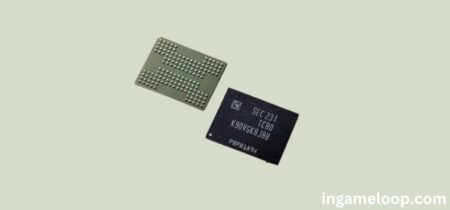
The leaked images of an engineering sample of Intel’s Meteor Lake processor suggest the company may have considered a dual CPU chiplet configuration during the development phase. However, recent reports indicate that the production models set for release retain the conventional single CPU chiplet design.
The images, shared by renowned hardware leaker @yuuki_ans, showcase a side-by-side comparison of a standard Meteor Lake engineering sample and a specialized “thermal test” variant. The key distinction lies in the thermal test version, which notably features two CPU chiplets instead of the usual single configuration.
MeteorLake-P:
— 结城安穗-YuuKi_AnS🍥 (@yuuki_ans) December 18, 2023
–
Normal Sample Die
and
Thermal test Sample Die pic.twitter.com/Laxft2dodm
While these images have sparked speculation and excitement within the tech community, it’s essential to temper expectations. The dual CPU chiplet configuration observed in the thermal test variant does not necessarily confirm its functional status, as it was explicitly crafted for thermal testing purposes.
Intel enthusiasts and industry analysts alike have begun to dissect the possibilities of what a dual CPU chiplet configuration could have meant for the Meteor Lake architecture. The prevailing hypothesis revolves around Intel’s potential emulation of AMD’s successful strategy seen in their Ryzen CPUs, which employ two identical chiplets. However, a noticeable width difference between the two chiplets in the leaked images—approximately 10 to 15% wider on one side—raises intriguing questions.
If these chiplets do indeed differ, one plausible scenario is the allocation of P-cores and E-cores to separate chiplets. This speculation opens the door to further conjecture, suggesting that Intel might have explored the integration of different semiconductor nodes for each chiplet. While P-cores could have remained on Intel’s 4-process node, E-cores might have been accommodated on TSMC’s 6nm process.
The leaked images have stirred curiosity about Intel’s experimentation with various CPU configurations, emphasizing the company’s commitment to exploring innovative designs. However, the crucial question remains: why did Intel ultimately revert to the traditional single CPU chiplet configuration for the shipping models?
Meteor Lake-P, a variant of the Meteor Lake architecture that is yet to be officially released, has been the subject of numerous speculations. Rumors circulating the cancellation of the Meteor Lake-P series add another layer of mystery to Intel’s decision-making process. The article delves into the uncertainty surrounding how Meteor Lake-P would have differed from recently launched variants like Meteor Lake-H and -U, both unveiled on December 14.
In the broader context, the tech community awaits official statements from Intel regarding the dual CPU chiplet configuration and the reasons behind opting for a single CPU chiplet in the shipping models. Until then, the leaked images provide a fascinating glimpse into Intel’s experimental endeavors, showcasing a company committed to pushing the boundaries of CPU design.
Related:
Meteor Lake laptop chip performs like Ryzen 7 desktop PC chip in leaked benchmark







